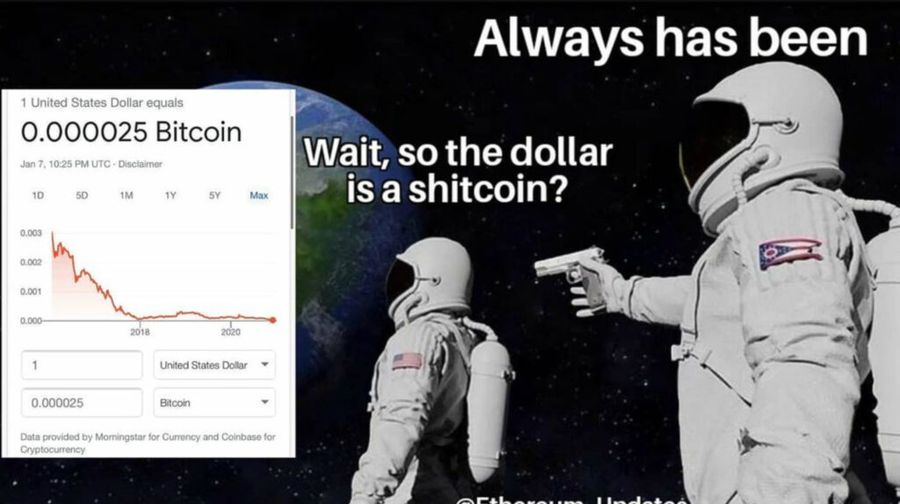We will examine the global de-dollarization trend, unwrap the effects of the US-China trade war, and dive deep into the implications for those poor little stablecoins. Furthermore, we will explore strategies that stablecoin issuers can adopt to ensure their survival in an increasingly diversified currency landscape. Finally, we will contemplate the potential future of stablecoins and their role in the ever-changing crypto market trends. Get ready for a wild ride, folks!

Definition of Stablecoin
According to Investopedia’s definition, stablecoins are cryptocurrencies whose value is pegged, or tied, to that of another currency, commodity, or financial instrument. Unlike traditional cryptocurrencies, stablecoins aim to maintain a steady value by linking their worth to a reserve or a combination of assets, leveraging blockchain technology. This underlying asset can be a global currency like the U.S. dollar, a tangible commodity like gold, or even another digital currency.
Read also: USDT, USDC, and BUSD – Which one is the best stablecoin?
Overview of De-Dollarization
According to strategists at JPMorgan, the largest U.S. bank, signs of de-dollarization are becoming evident in the global economy. De-dollarization, as a concept, refers to the process of reducing reliance on the U.S. dollar in global transactions, including digital payments. This trend has gained momentum over the past decade, with countries increasingly diversifying their currency holdings and actively seeking alternatives to the U.S. dollar. Several factors have contributed to this movement, including geopolitical tensions, economic shifts, and the pursuit of financial independence.

Global De-Dollarization
Geopolitical drama, my friends, has been like the ultimate reality show, fueling the fire of de-dollarization. And let’s not forget the ongoing U.S.-China trade war, the heavyweight bout of the century, stirring up a storm and causing some major players to step up and challenge the almighty U.S. dollar.
– Effects of the US-China Trade War
The trade war between the United States and China has accelerated de-dollarization. China, being the world’s second-largest economy and holding a dominant position in global trade, stands out as one of the most proactive participants in the movement to challenge the existing order.
Despite China’s active efforts to promote the international use of its currency, the yuan, it still lags behind the U.S. dollar in terms of global foreign exchange reserves. In the fourth quarter of last year, the U.S. dollar maintained its dominance, accounting for 58.38% of global foreign exchange reserves. In contrast, the Chinese yuan represented a mere 2.69% during the same period, as reported by the International Monetary Fund’s Currency Composition of Foreign Exchange Reserves (COFER).
Read also: Are stablecoins securities?
– Shifts in the Global Economy
The strains resulting from steep U.S. interest rate hikes and the imposition of sanctions that have effectively isolated Russia from the global banking system have spurred the “BRICS” nations (Brazil, Russia, India, China, and South Africa) to actively challenge the longstanding dominance of the U.S. dollar.
Furthermore, during a recent visit to China, Malaysia’s Prime Minister Anwar Ibrahim proposed the establishment of an “Asian Monetary Fund” as a means to decrease dependence on the U.S. dollar. Similarly, in April, Brazilian President Lula conducted a state visit to Beijing, during which he expressed the need for reduced dependence on the U.S. dollar in global trade. These nations have recognized the vulnerabilities associated with their heavy reliance on the U.S. dollar and have consequently intensified efforts to promote alternatives.

– Impact on Stablecoins
As the dominance of the U.S. dollar decreases, stablecoins pegged to the dollar may face challenges. The demand for stablecoins depends on the trust and acceptance of the underlying pegged asset. A decline in the use of the U.S. dollar could potentially reduce the demand for stablecoins tied to it.
How Stablecoins Can Survive
The survival of stablecoins lies in their ability to adapt, innovate, and serve the evolving needs of a changing global economy.
– Adoption of Stablecoins
To navigate the evolving landscape, stablecoin issuers have the opportunity to adapt by expanding the range of assets to which their stablecoins are pegged. By introducing stablecoins pegged to various fiat currencies or even a diversified basket of currencies, they can cater to a wider user base and effectively manage the potential risks stemming from a decline in the dominance of the U.S. dollar.
– The Role of Exchanges
Cryptocurrency exchanges play a vital role in ensuring the sustainability of stablecoins. They serve as key platforms for listing and facilitating the trading of stablecoins pegged to different currencies, thereby providing essential liquidity and contributing to their widespread adoption. The collaboration between stablecoin issuers and exchanges further strengthens the stability and reliability of these digital assets.
Read also: Coins and Tokens: What’s the Difference?
Potential Future of Stablecoins
The future of stablecoins is hanging in the balance, my friends, and it’s all about riding the waves of cryptocurrency regulation, technological wizardry, and the ever-shifting market scene. As de-dollarization takes center stage, stablecoins are facing a wild mix of risks and chances to shine.
Sure, the dwindling power of the almighty U.S. dollar might throw some shade on those stablecoin pegs, but fear not! It’s all about taking charge and making some bold moves. Diversifying those underlying assets and rallying for broader financial inclusion can be the secret sauce to keep those stablecoins kickin’ for the long haul. We’re talking about building a future where stablecoins are adaptable, innovative, and ready to serve the needs of a rapidly changing global economy. So buckle up, folks, because the future of stablecoins is about to get lit!



